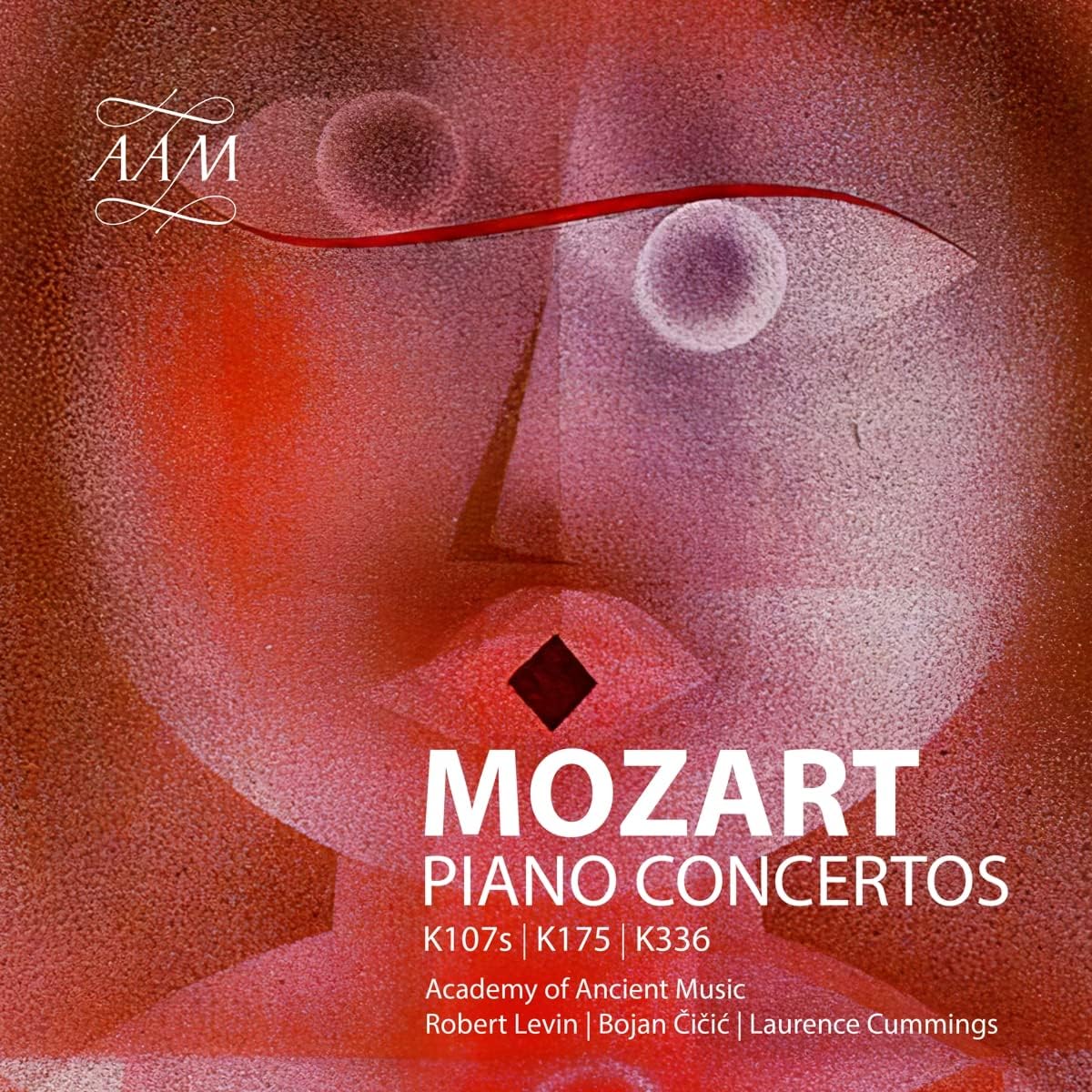Academy of Ancient Music, Robert Levin, Bojan Čičić, Laurence Cummings
62:33
AAM AAM042
Many will doubtless recall that among the most exciting projects of the last decades of the 20th century was the recording of complete sets of the Mozart keyboard concertos undertaken by Malcolm Bilson (Archiv) and Robert Levin (L’Oiseau-Lyre). Employing instruments of the period and stylish ornamentation, both cycles were path-breaking in the manner in which they gave us the most historically informed ideas yet of how the piano concertos might have sounded to Mozart’s own audiences. The Bilson cycle was to all intents and purposes completed – though you had to go ‘off-piste’ to get the three very early concertos of K107 – but Levin’s came to a halt around the turn of the century after eight volumes. The death of Christopher Hogwood, the conductor of the series, in 2014 might have set the seal on determining that the cycle would remain incomplete. Now however comes the first of a series of five discs on the AAM’s own label that will complete Levin’s set by 2024.
It is something of an assortment of curiosities on which you will not even hear a note played on the fortepiano! Perhaps most curious of all is the concerto fragment that appears in the music notebook of Mozart’s sister Nannerl. The notebook is home to several of Mozart’s earliest efforts at composition (K1a, b and c) and the proposition made here (by Mozart scholar Cliff Eisen) is that the fragment was composed by Mozart and entered in the notebook by the children’s father Leopold. The orchestral passages are not notated but the music has been reconstructed by Robert Levin. It has a strangely familiar feel to it, which annoyingly I cannot put a name to at present, though the saucy folk-like tune could be that of any number of cheeky songs or comic arias. Like the three concertos of K107, it is played on a two-manual harpsichord built by Alan Gotto of Norwich after c.1770 Silbermann, an instrument that does in fact at times sound disconcertingly like a fortepiano (at least as recorded here).
The three concertos of K107 represent a small step in Mozart’s giant advancement of the keyboard concerto. Dating from 1771 or 72, they are not original works, but arrangements of the keyboard sonatas opus 5 of J C Bach, who had befriended the child Mozart during his London visit some six years earlier. Only the first, a charming work, has three movements, the others just two. All three betray the galant elegance of their original composer, as does the sentimental style of the set of variations that form the second movement of the G-major Concerto (No 2). Like all the music on the CD the concertos are played with an easy fluency and nimble, precise finger-work. There are, however, times when I felt that Levin might have allowed a little more affection into his playing, which does carry more than the odd hint of the dutiful.
For those that haven’t read the notes prior to listening to the disc, another surprise comes with the Piano Concerto No 5, K175 (1773), Mozart’s first original piano concerto, for it is played not on the piano (or fortepiano) but on the organ. Eisen’s argument for doing so is convincing. You’ll have to read the full note to find out why in detail, but in brief it hinges mainly on two facts. Mozart’s lost autograph titled the work ‘per il Clavicembalo’, at the time a generic term for keyboard instruments. Perhaps still more persuasively the keyboard part lacks the dynamic markings expected in music for piano, but not that for organ. Although not mentioned by Eisen the general character of the work might also suggest organ for the original solo instrument, for it is a grandiose D-major concerto with trumpets and timpani. To my mind, it works well enough in the outer movements but the lyrical central Andante (without the drums and trumpets, of course) sounds far more ‘pianistic’ and arouses doubts. I also have a question mark about the instrument used, the organ completed by George England in 1760 for Christ’s Chapel of Alleyn’s College of God’s Gift, Dulwich, and restored by William Drake in 2009. I’m no organ expert, but it doesn’t sound remotely like the Austrian organs of this period known to me. Levin’s playing of it is again remarkable for its easy facility, though there are hints of skating over some of the more florid passage work. Lastly, there’s an organ work that there’s no debate about, the final Church or Epistle Sonata, K336. The AAM gives Levin generally tidy support, although the ensemble playing of the strings is variable, the above-mentioned variations of K107/2 being an example of less than perfect ensemble. Overall the disc is an interesting addition to the cycle if not quite of the highest calibre.
Brian Robins
